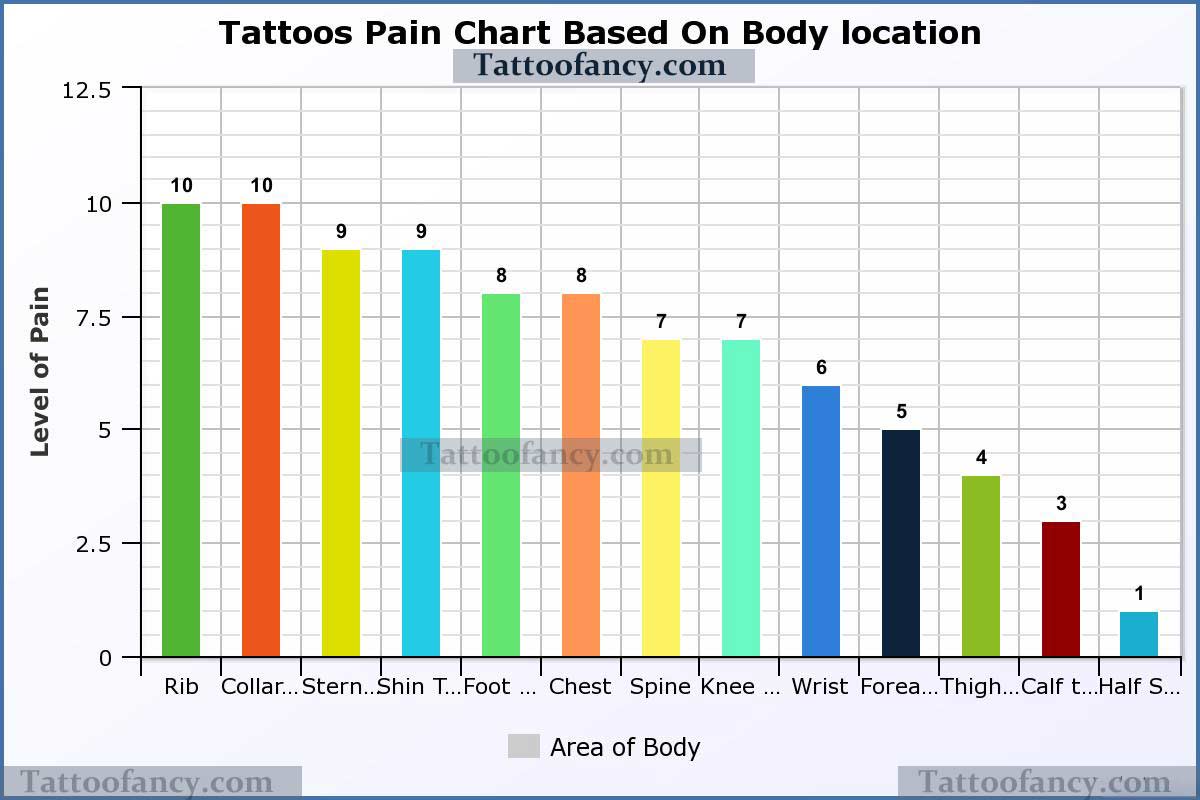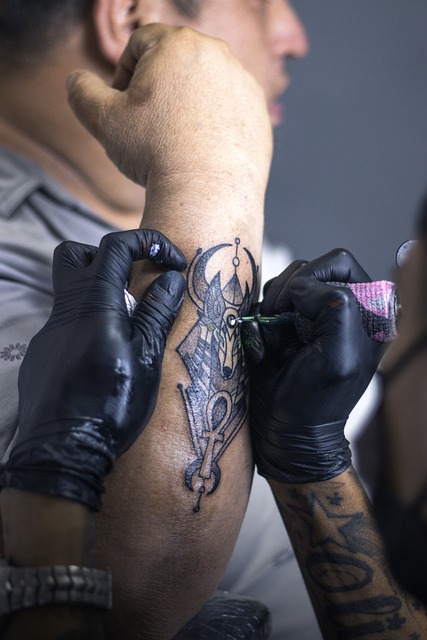Each person experiences pain differently, but generally, tattoo pain is described as a sharp, burning sensation. Some people compare it to getting a paper cut, while others say it feels more like being stung by a bee.
There is a lot of variation in how much tattoos hurt. It depends on how big and detailed the tattoo is, where it is on your body, and your pain tolerance. Generally, smaller and less detailed tattoos will hurt less than larger and more detailed tattoos. Tattoos on parts of your body with more muscle and fat will hurt less than tattoos on bones or joints. And finally, some people have a higher pain tolerance than others.
So, for example, a small tattoo on your forearm might only feel like a mild sting, while a large tattoo on your ribs could be quite painful, like getting a big bruise. And someone with a low pain tolerance might find even a small tattoo quite unbearable, while someone with a high pain tolerance might not even flinch at a large tattoo.
Tattoos involve penetrating the skin with sharp instruments, so it is natural that they would be painful. Some people report that the pain is similar to being pricked with a needle, while others say it is more like being scratched or burned.
Tattoos Pain Chart Based On Body Location
The amount of pain that you feel when getting a tattoo depends on the location of the tattoo on your body. The following chart shows the approximate level of pain that you can expect to feel when getting a tattoo in different areas of your body.
| Area of Body | Level of Pain |
| Rib | 10 |
| Collarbone | 10 |
| Sternum | 9 |
| Shin | 9 |
| Foot Pain | 8 |
| Chest | 8 |
| Spine | 7 |
| Knee | 7 |
| Wrist | 6 |
| Forearm | 5 |
| Thigh | 4 |
| Calf | 3 |
| Half Sleeve | 1 |
| Arms | 3 – 4 |
| Legs | 4 – 5 |
| Stomach | 5 – 6 |
| Back | 6 – 7 |
Male tattoo pain vs female tattoo pain: Which is worse?
There is a lot of debate when it comes to which sex experiences more pain when getting a tattoo. While there is no clear answer, there are some generalizations that can be made. For example, it is often said that women have a higher pain tolerance than men. This may be due to the fact that women are more likely to experience pain on a regular basis, such as during childbirth. Additionally, it is often said that women have thicker skin than men, which means that the needles have to penetrate deeper to reach the desired depth. This can result in more pain for men.
However, generally speaking, most people report that female tattoo pain is less intense than male tattoo pain. This is likely due to the fact that women have more fat and less muscle tissue than men, making the skin less tight and less likely to tear during the tattooing process. Additionally, hormones can also play a role in pain perception, with women often reporting less pain during their menstrual cycle when estrogen levels are highest.
The pain from a tattoo can vary depending on the individual’s pain tolerance, the location of the tattoo, and the size and intricacy of the tattoo. Most people would rate the pain from a tattoo as a 6 or 7 on a scale of 1 to 10.
The 7 Best Tattoo Pain Relief Methods, According to Experts
There are a variety of ways to reduce the pain associated with getting a tattoo. Some people recommend over-the-counter painkillers, while others suggest numbing creams or gels. Many people also find that certain tattoo placement areas are more painful than others.
Here, we’ll explore some of the best tattoo pain relief methods, according to experts. We’ll also provide some tips on how to reduce pain during tattooing, as well as what to expect after getting a tattoo.
- Over-the-counter painkillers:
Acetaminophen (Tylenol) and ibuprofen (Advil, Motrin) are two of the most commonly recommended over-the-counter painkillers for tattoo pain relief. They’re both effective at reducing pain and inflammation.
- Numbing creams and gels:
There are a variety of numbing creams and gels available on the market. These products typically contain lidocaine, which is a local anesthetic that numbs the skin.
Some numbing creams and gels require a prescription, while others are available over-the-counter.
- Tattoo placement:
Certain tattoo placement areas are more painful than others. The most painful areas tend to be those with thinner skin, such as the wrists, ankles, and ribs.
The least painful areas are typically those with thicker skin, such as the upper arm, back, and thighs.
- Tattoo size:
The size of the tattoo can also affect how painful it is. Smaller tattoos tend to be less painful than larger ones.
- Tattoo depth:
The depth of the tattoo needle can also affect pain levels. Shallow tattoos tend to be less painful than those that are done at a deeper level.
- How to reduce pain during tattooing:
There are a few things you can do to reduce pain during tattooing, such as:
- Take a pain reliever such as acetaminophen or ibuprofen before your tattoo appointment.
- Applying a numbing cream or gel to the tattoo area before the tattooing process begins.
- Ask the tattoo artist to go slowly and take breaks if you’re in pain.
- Breathe deeply and relax as much as possible during the tattooing process.
- What to expect after getting a tattoo:
It’s normal to experience some pain, swelling, and bruising after getting a tattoo. These side effects usually last for a few days.
Applying a cold compress to the tattoo area can help reduce pain and swelling. Taking a pain reliever such as acetaminophen or ibuprofen can also help.
If you experience any signs of infection, such as redness, swelling, or pus, you should see a doctor right away.
When shouldn’t take tattoo?
There are a few medical conditions where it is contraindicated to get a tattoo, such as diabetes, hemophilia, and autoimmune disorders. In addition, people who are pregnant or breastfeeding should not get tattoos. Additionally, people who have a history of keloid scars should avoid getting tattoos, as they may be more prone to developing keloids at the tattoo site. Finally, people with skin conditions like psoriasis or eczema may want to avoid tattoos, as the tattooing process can exacerbate these conditions.
If you have any skin diseases or infections, it is advisable to wait until your skin has completely healed before getting a tattoo.
FAQ
1. What are the different types of tattoo pain?
There are two main types of tattoo pain: needle pain and aftercare pain. Needle pain is the pain of the needles puncturing your skin. Aftercare pain is the pain that can occur during the healing process, as your skin adjusts to the new tattoo.
2. What are some of the more common places people get tattooed?
Some of the more common places people get tattooed are the arms, legs, back, and chest.
3. How does the pain of getting a tattoo compare to other types of pain?
The pain of getting a tattoo varies from person to person. Some people report that it is very painful, while others find it to be only mildly uncomfortable.
4. How long does tattoo pain typically last?
Tattoo pain typically lasts for the duration of the tattooing session, which can be anywhere from a few minutes to several hours.
5. What are some ways to manage tattoo pain?
There are a few ways to manage tattoo pain, including taking over-the-counter pain medication, using numbing cream, and staying hydrated.
Conclude: Tattoo pain is a normal part of the tattooing process. It is important to be mentally prepared for the pain that you will experience. The pain will vary depending on the location of the tattoo, the size of the tattoo, and your pain tolerance. There are a few things that you can do to help ease the pain: take a pain reliever before your tattoo, apply a numbing cream to the area before your tattoo, and try to relax during the tattooing process.


